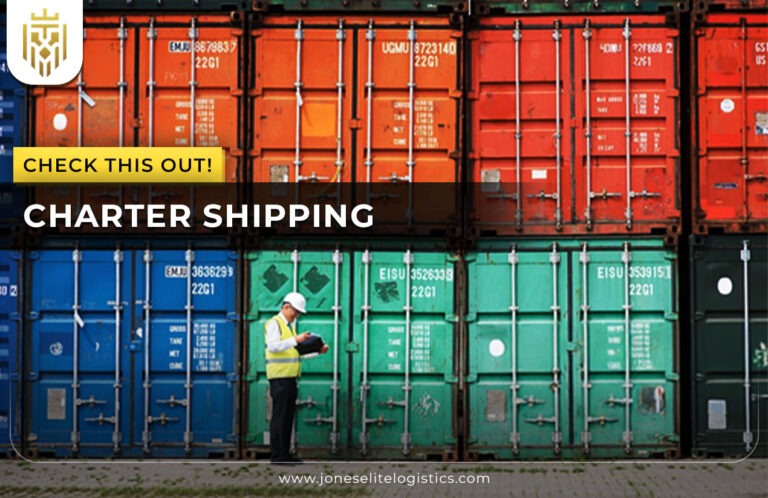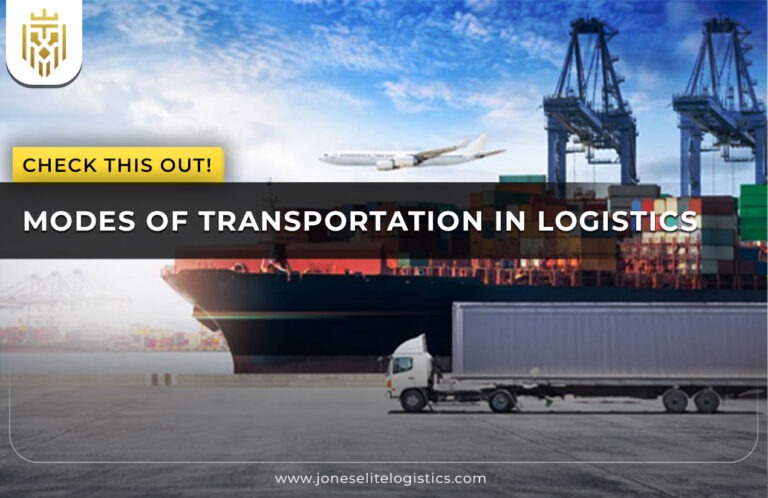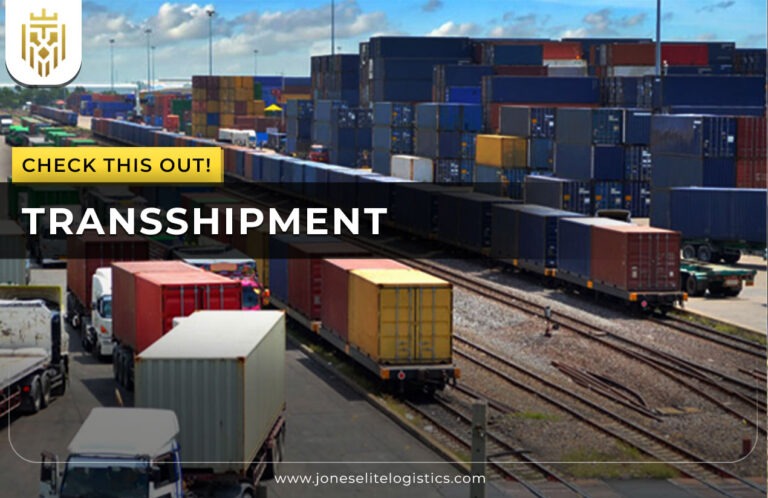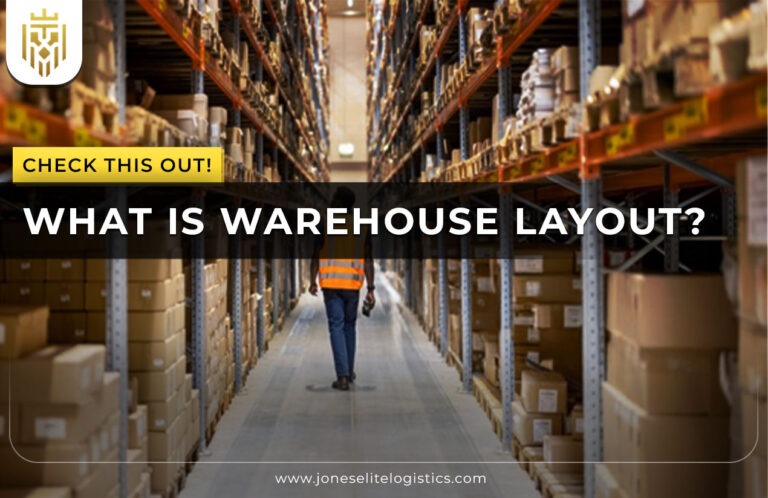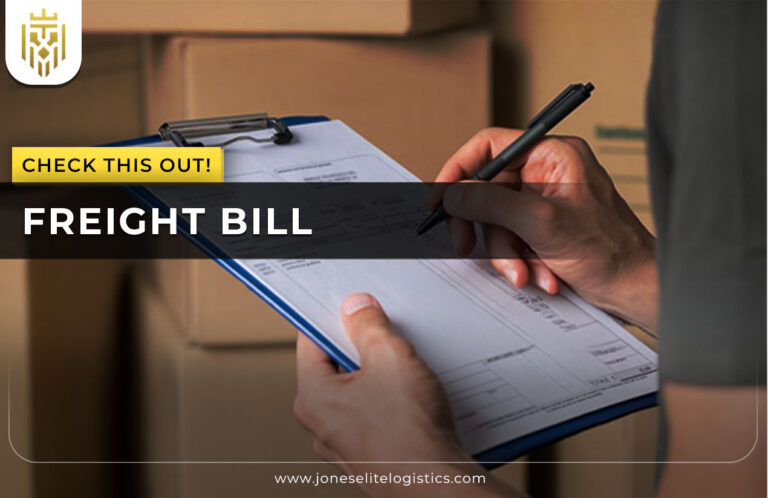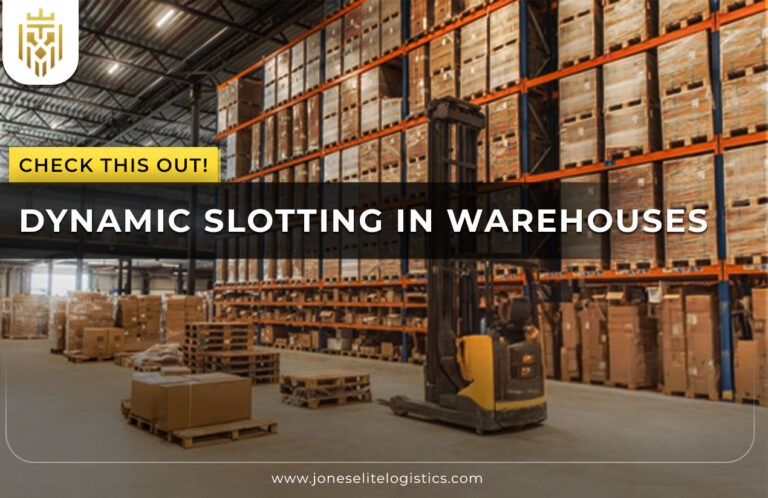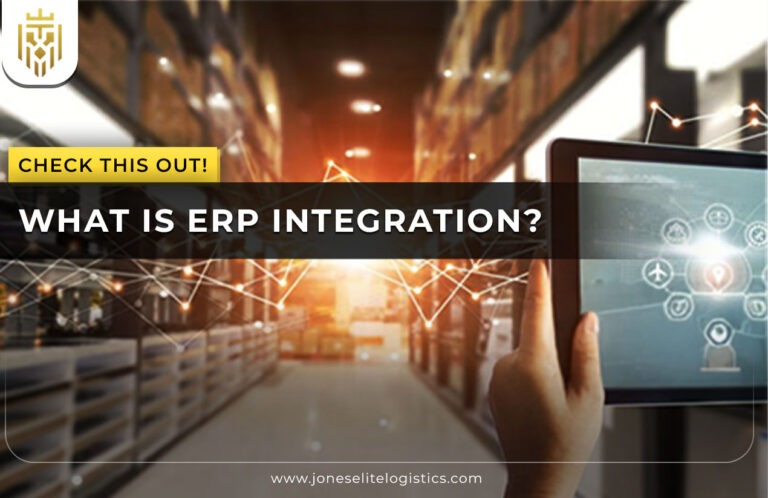What Is a Consignee in Shipping?
A consignee is usually the person or organisation listed on the shipping documents who is allowed to receive the goods when they arrive at the destination port. Knowing what a consignee is in shipping helps clarify global trade by identifying who is legally responsible for receiving goods, dealing with customs, and managing the final delivery at the destination.
A Consignee is not A Consignor or A Shipper
The consignee is different from the consignor, who sends the goods. The consignor starts the shipment, while the consignee finishes the transaction by getting the cargo from the carrier through the agreed logistics process.
Legal and Operational Role of the Consignee
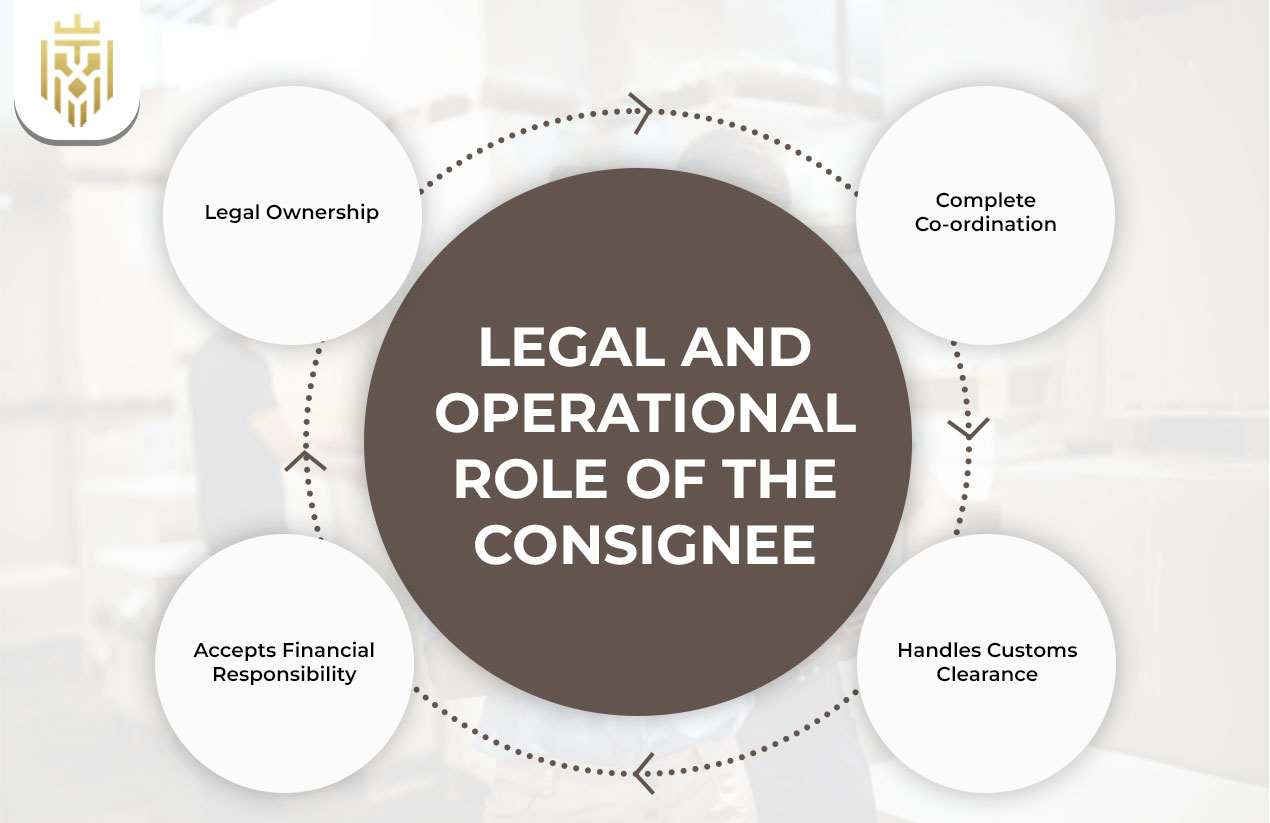
The consignee in shipping has specific legal and operational responsibilities during the freight process. Their duties go beyond simply receiving the goods; they ensure that legal requirements are met and play a key role in coordinating a smooth delivery through customs and regulations.
Legal Ownership
When the cargo reaches the consignee, ownership transfers based on the contract terms. This confirms the consignee’s accountability and role in the supply chain, including potential risks linked to logistics problems or differences during transit or delivery.
Complete Coordination
Effective coordination with the carrier and logistics partners is vital for the consignee. They ensure that delivery timelines are met, customs procedures are followed, and any freight problems are addressed quickly by communicating efficiently with all involved parties.
Handles Customs Clearance
The consignee also manages customs clearance tasks to avoid delays. They collaborate with agents and brokers to ensure proper documentation, duty payments, and compliance with legal entry requirements throughout the international shipping process.
Accepts Financial Responsibility
The consignee takes on financial responsibilities tied to the shipment, which include freight, customs fees, and storage costs. This role strengthens the consignee’s interest in ensuring that goods are received efficiently without extra costs or disruptions.
Core Responsibilities of a Consignee
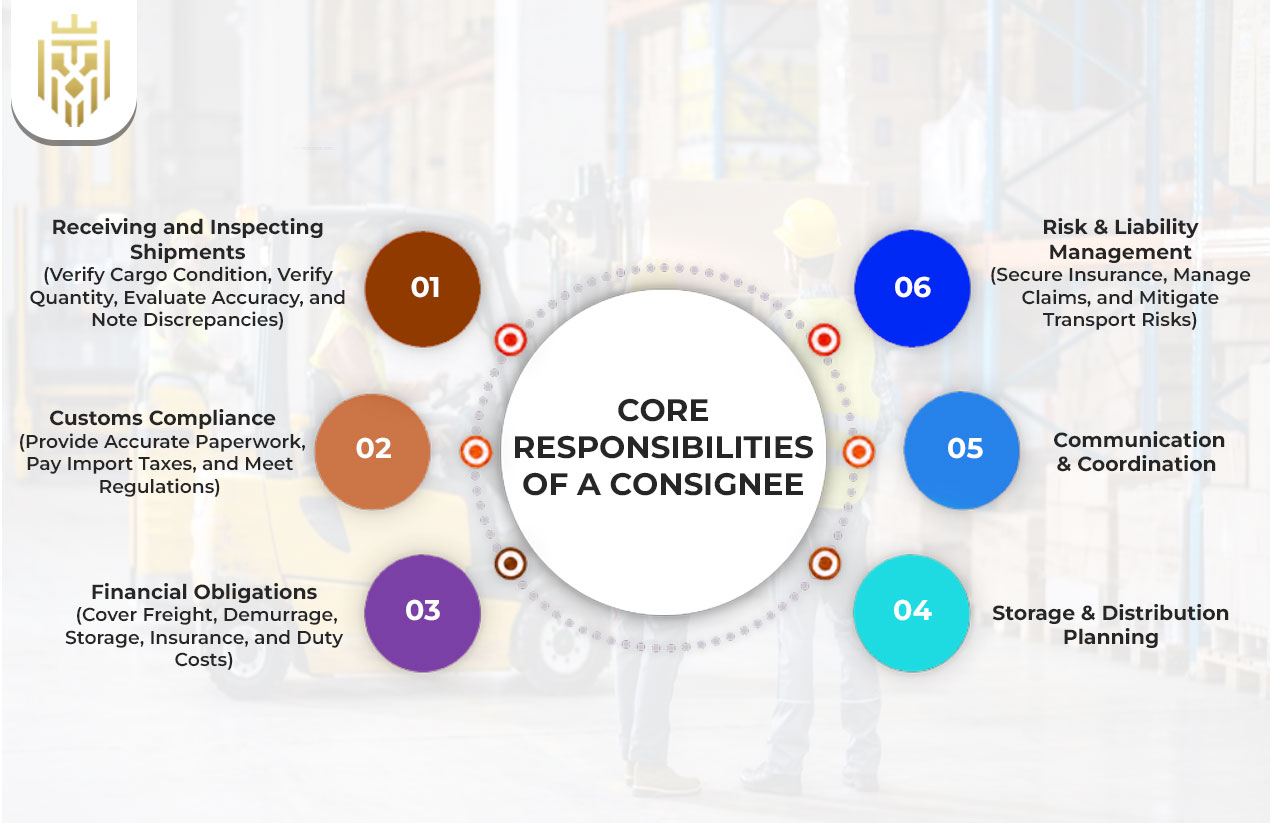
The consignee’s responsibilities include both legal tasks and operational work. They need to handle customs compliance, financial obligations, storage needs, and risk management effectively while working with shippers, logistics partners, and regulatory authorities to ensure a smooth delivery.
Receiving and Inspecting Shipments
Upon delivery, the consignee must check the goods for accuracy and condition. Their job is to confirm that everything aligns with the shipping documents and is undamaged before signing for receipt from the carrier or logistics partner.
Verify Cargo Condition
Inspecting the cargo protects the consignee from accepting damaged items. This verification process helps avoid disputes and future claims. Documenting any issues with photos or reports keeps the shipping process transparent and accountable at all stages.
Verify Quantity
Counting the items against the bill of lading ensures the correct amount has been received. This step protects the consignee from disputes with the carrier or possible inventory discrepancies when the shipment arrives at its destination.
Evaluate Accuracy
Accuracy checks verify that the shipment matches the order and shipping details. Finding errors at this stage helps prevent further complications and ensures that the logistics process is reliable and compliant with contract terms.
Note Discrepancies
If there are differences, the consignee must inform the relevant parties, including the carrier and consignor. Recording these issues is crucial for resolving disputes and maintaining accountability throughout the freight and delivery chain.
Customs Compliance
Proper customs compliance is essential to avoid fines and delays. The consignee is responsible for collaborating with customs authorities and brokers to ensure accurate paperwork, tax payments, and adherence to trade regulations for smooth cargo clearance.
Provide Accurate Paperwork
Import taxes are among the consignee’s obligations. Paying them on time avoids unwanted storage or demurrage fees. Efficiently managing these payments shows the consignee’s accountability within the logistics and freight process.
Pay Import Taxes
Regulatory compliance ensures the shipment enters the country without legal issues. The consignee must stay informed about laws and guidelines to meet all requirements efficiently and prevent delays during the shipping process.
Meet Regulations
Consignees are responsible for important financial areas, including freight charges, storage, and insurance. These expenses are unavoidable parts of the process and must be anticipated to prevent delays or disputes during the final delivery stages.
Financial Obligations
Covering freight costs is a basic duty. These expenses are usually detailed in contracts and invoices. The consignee ensures timely payment to avoid complications with the carrier and keeps the delivery process smooth.
Cover Freight
Delays can lead to demurrage fees, which add unnecessary costs. Managing schedules and ensuring timely customs clearance reduces these expenses. The consignee is responsible for minimising these avoidable financial burdens through proactive planning.
Demurrage
Storage arrangements fall under the consignee’s financial and operational responsibilities. Delays in collection or clearance can result in extra storage fees, which the consignee must manage within the overall logistics framework of receiving goods.
Storage
Insurance protects the consignee from possible losses during transit. Securing the right coverage ensures financial safety and lessens risks linked to theft, damage, or natural disasters during the shipping process.
Insurance
Duty payments are a crucial part of the consignee’s responsibilities. These costs ensure the legal entry of goods into the country, and the consignee must budget accordingly to meet all obligations without disrupting operations.
Duty Costs
Effective storage and distribution planning is necessary for smooth operations after delivery. The consignee collaborates with logistics partners to simplify warehousing, inventory management, and timely distribution of products to the intended recipients.
Storage & Distribution Planning
Clear communication with shippers, carriers, and logistics providers helps ensure that the shipping process runs smoothly. Coordination addresses potential issues early, keeping timelines stable and maintaining accountability across all parties involved.
Communication & Coordination
Consignees play a significant role in managing risk and liability, ensuring safeguards throughout shipping. This includes careful planning, insurance coverage, and thorough documentation to prevent losses or unexpected liabilities during transit.
Risk & Liability Management
Insurance is vital for reducing risk. The consignee secures policies to cover potential damages during the freight journey, ensuring protection against unforeseen incidents throughout the shipping process.
Secure Insurance
When goods are damaged or lost, the consignee manages claims with the carrier or insurer. Handling claims efficiently reduces financial impact and helps maintain strong partnerships within the larger supply chain logistics network.
Manage Claims
Planning routes and verifying carrier credentials helps reduce transport risks. Proactive risk management strategies ensure the consignee minimises exposure to losses while protecting the interests of everyone involved in the shipping process.
Mitigate Transport Risks
Planning routes and verifying carrier credentials helps reduce transport risks. Proactive risk management strategies ensure the consignee shipping minimises exposure to losses while protecting the interests of everyone involved in the shipping process.
Types of Consignees
Consignees can differ based on the transaction. Knowing these distinctions clarifies who the consignee is in shipping documents and why certain entities, like ultimate or intermediate consignees, appear in the shipment paperwork.
Ultimate Consignee
The ultimate consignee is the final recipient of the goods. They take full ownership and responsibility once delivery is complete. This role usually involves additional tasks like distribution and further handling within their logistics network.
Intermediate Consignee
An intermediate consignee may temporarily hold goods during transit. These consignees assist with customs clearance or storage before handing them off to the ultimate consignee, playing a vital role in the larger logistics chain.
Consignee vs. Notify Party
Understanding the difference between consignee and notify party helps avoid misunderstandings during shipping. While they may appear together on documents, only the consignee has the legal right to collect the shipment from the carrier.
Consignee Holds Authority
The consignee has the legal right to receive the cargo. The notify party receives updates but cannot claim the goods. This difference is important in complex freight and international shipping arrangements to prevent conflicts.
Notify Gets Updates
A notify party receives information about the shipment’s progress but holds no ownership rights. Their role is strictly to inform, providing updates to interested parties without authority over the physical process.
One Legal Consignee
Shipping documents can list multiple notify parties for updates. However, only one consignee holds legal ownership. This keeps accountability clear throughout the logistics and delivery process.
Consignee vs. Consignor (Shipper)
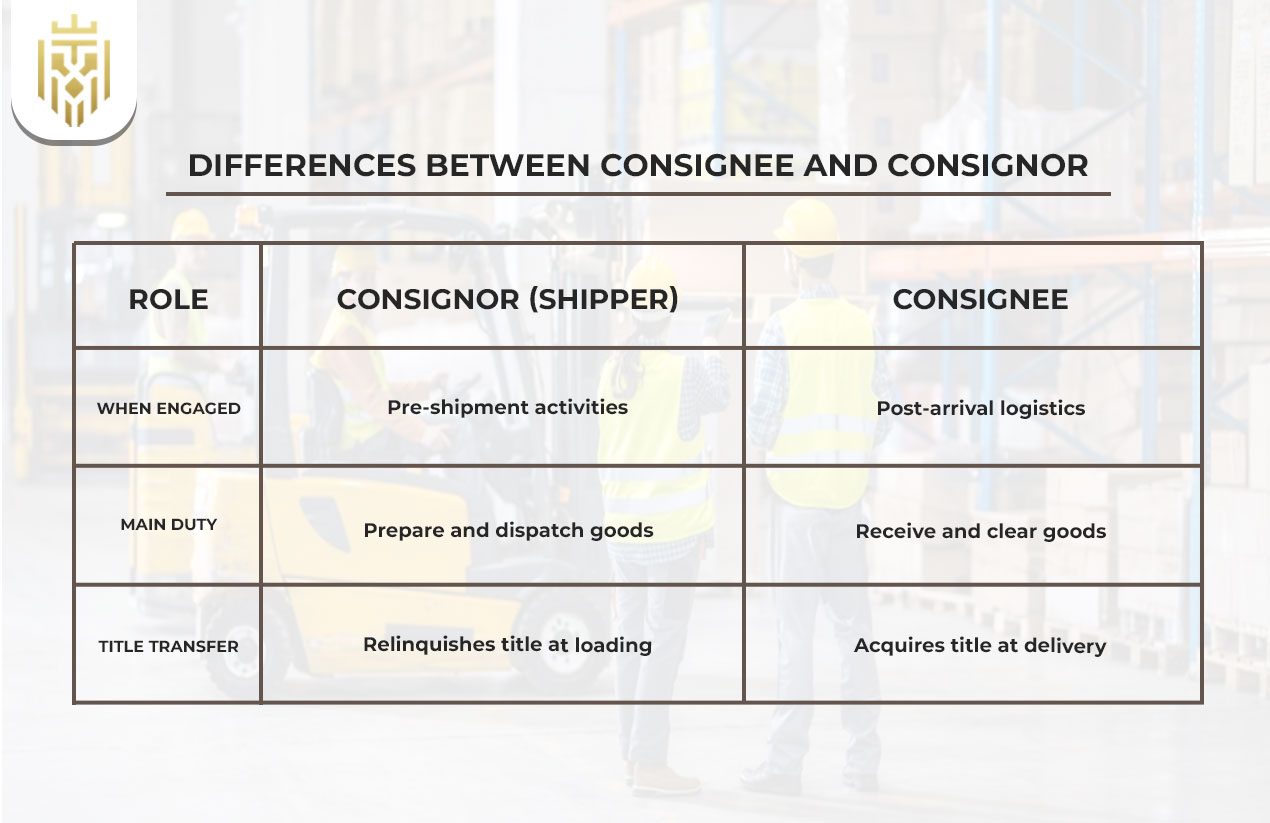
Understanding consignee versus consignor is important in shipping. The consignor sends the goods, while the consignee receives them, managing logistics and finishing the final delivery process.
When Engaged
The consignor handles pre-shipment activities like preparing documents and scheduling the carrier. The consignee takes care of post-arrival logistics, focusing on customs clearance, freight payments, and coordinating final delivery through the right logistics networks.
Main Duty
The consignor must prepare and ship goods correctly to meet shipping requirements. In contrast, the consignee is responsible for receiving and clearing goods, efficiently completing all necessary customs and shipping processes within deadlines.
Title Transfer
The consignor typically gives up title at loading, transferring ownership once the goods are handed over to the carrier. The consignee formally acquires title at delivery and takes legal responsibilities for storage, distribution, and any future claims related to the shipment.
Common Challenges
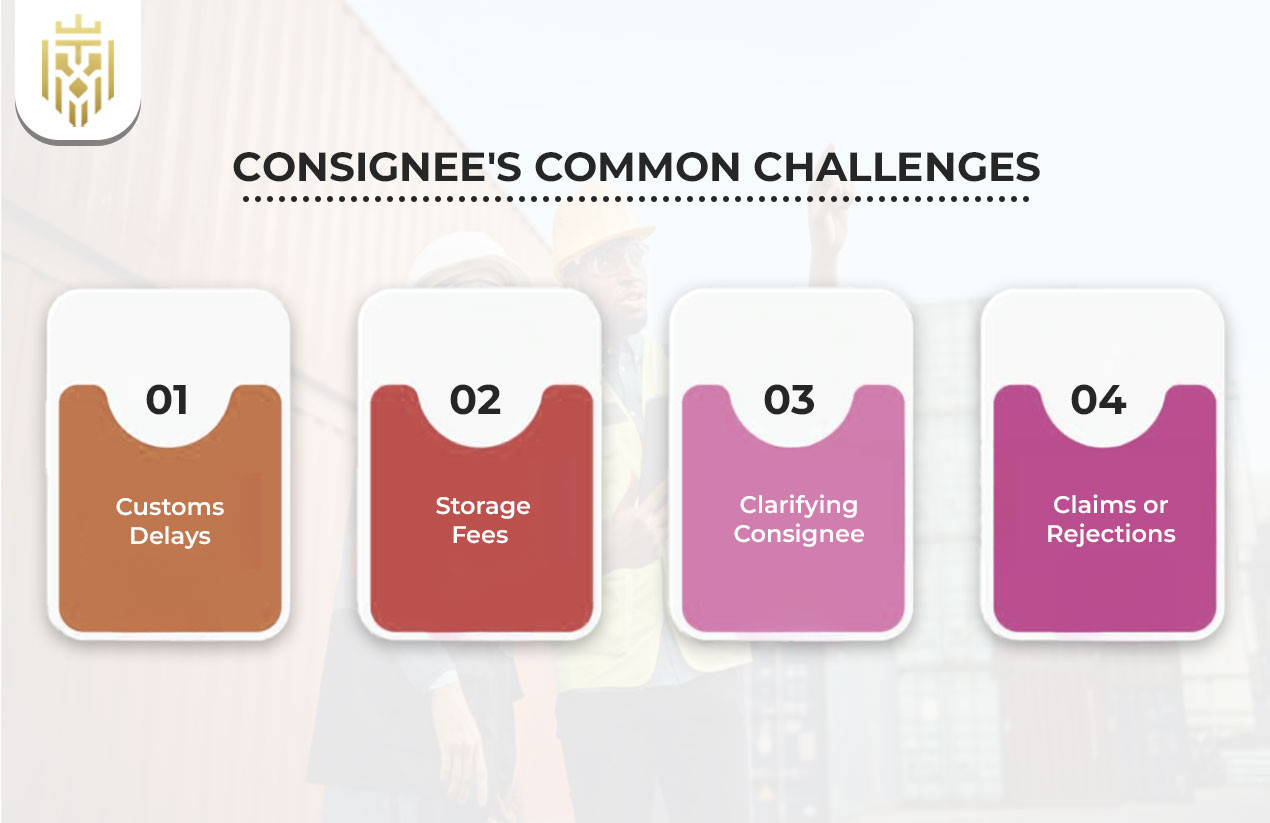
Common challenges for consignees include customs delays, unclear paperwork, storage fees, and disputes over damaged or rejected goods. Proper planning, clear documentation, and proactive communication with carriers can help reduce these operational challenges.
Customs Delays
Delays at customs lead to higher costs and disruptions. Making sure that all documentation is correct and regulations are followed helps avoid these problems, allowing the consignee to meet their responsibilities efficiently within the shipping framework.
Storage Fees
Storage fees are added when shipments are not cleared on time. Working efficiently with customs and logistics providers helps consignees avoid unnecessary charges and keep operations running smoothly through careful management of the shipping process.
Clarifying Consignee
Misunderstandings about who the consignee is in shipping can cause serious delays. Providing accurate documentation and clear designations on the bill of lading prevents confusion between the consignee, consignor, and notify parties, ensuring seamless transactions and accountability.
Claims or Rejections
Rejections or damaged goods require quick action. The consignee must start claims promptly, working with insurers or carriers to solve disputes. This protects financial interests and keeps the freight and delivery process efficient.
Real-World Scenarios & Examples
Different industries manage consignees differently. Examples include importers as ultimate consignees, 3PL companies acting as intermediaries, and individual consumers in B2C shipments. Each plays a role in the broader logistics network.
Importer as Consignee
Importers listed as consignees ensure the legal acceptance of goods. They handle customs clearance, logistics, and financial responsibilities tied to commercial shipments, ensuring compliance and operational continuity in global trade.
3PL as Consignee
Third-party logistics providers or warehouses often act as intermediate consignees. They manage storage, customs, and distribution on behalf of the ultimate consignee, supporting shipping until final delivery is successfully completed.
Consumers as Consignee
In B2C scenarios, individual consumers serve as consignees. They receive final deliveries directly and take on the responsibility of checking and accepting goods. This role simplifies the logistics chain by completing the transaction with the end user.
Why the Consignee Matters in Shipping
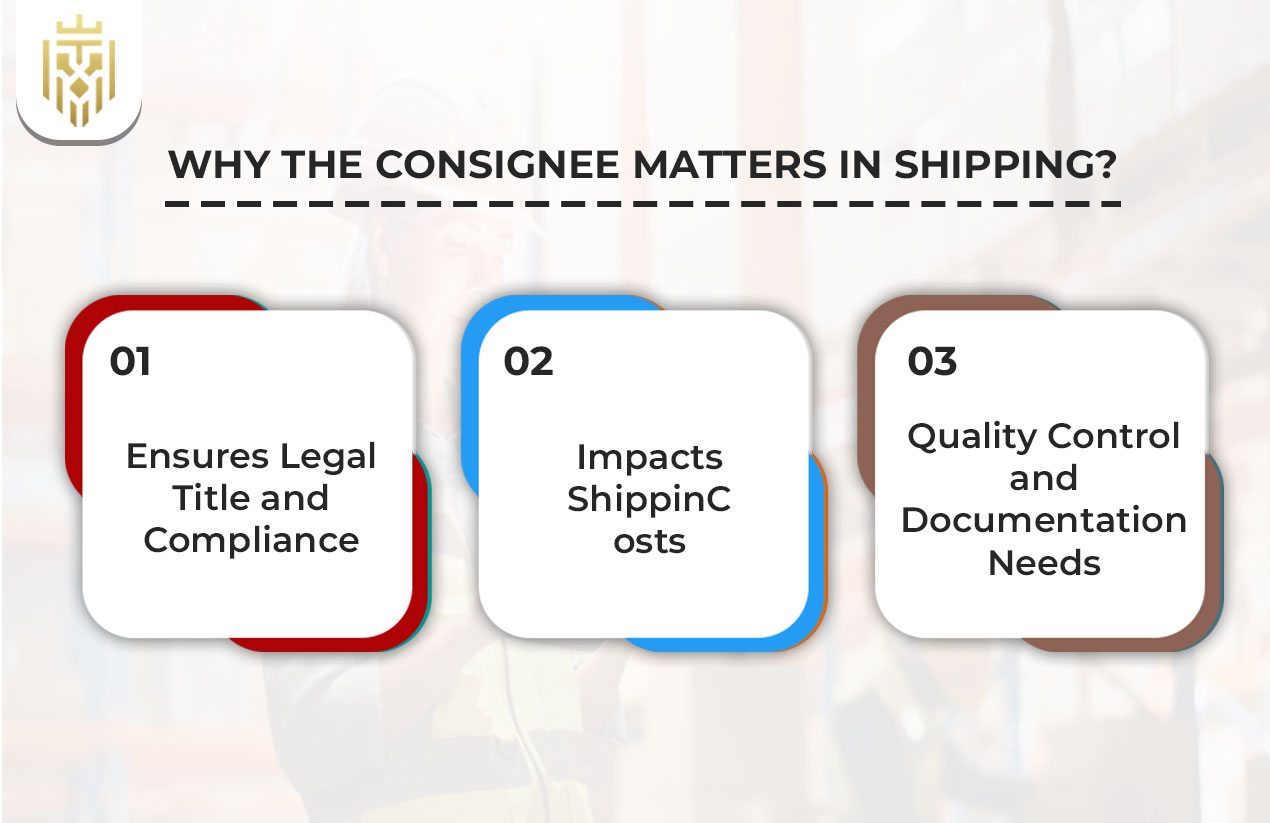
The consignee’s role helps ensure smooth shipping transactions. They maintain legal ownership, financial responsibility, and customs compliance, making them a crucial link between logistics providers, shippers, and receivers within international trade networks.
Ensures Legal Title and Compliance
A consignee’s responsibilities include securing legal title and ensuring compliance. This legal status aids in smooth customs clearance and freight transactions, minimising risks for everyone involved in the shipping process.
Impacts Shipping Costs
Consignees influence shipping costs through storage, handling, and customs-related charges. Their choices impact overall logistics expenses, making them vital in negotiating contracts and managing costs effectively within the supply chain.
Quality Control and Documentation Needs
Quality control and documentation are key duties for the consignee. They check the condition of goods, keep proper records, and resolve discrepancies, ensuring accountability throughout the logistics and shipping process.
FAQs
1) Who is authorised to receive cargo?
The consignee in shipping is the party legally allowed to receive the cargo when it arrives. This party handles customs clearance and takes responsibility for the freight and delivery process.
2) Can a notify party collect the shipment?
A notify party only gets updates about the shipment’s progress. They cannot collect goods because they do not have the legal authority that the consignee has.
3) Does the consignee always cover import duties?
Usually, the consignee pays import duties, taxes, and related freight charges, unless there are prior agreements stating that the consignor or another party will handle these costs.
4) What if no consignee is identified?
If there is no named consignee, shipping processes may be delayed. No one will have the legal authority to claim the goods, pay freight charges, or manage customs and logistics.
5) Can consignees refuse shipment?
A consignee can refuse a shipment if the goods are damaged, incorrect, or violate contract terms. Refusal may result in storage costs or a return to the consignor for resolution.
6) Who is a consignee?
In shipping, a consignee is the designated party responsible for receiving goods, handling logistics, clearing customs, and paying any freight or duties upon successful arrival of the shipment.

